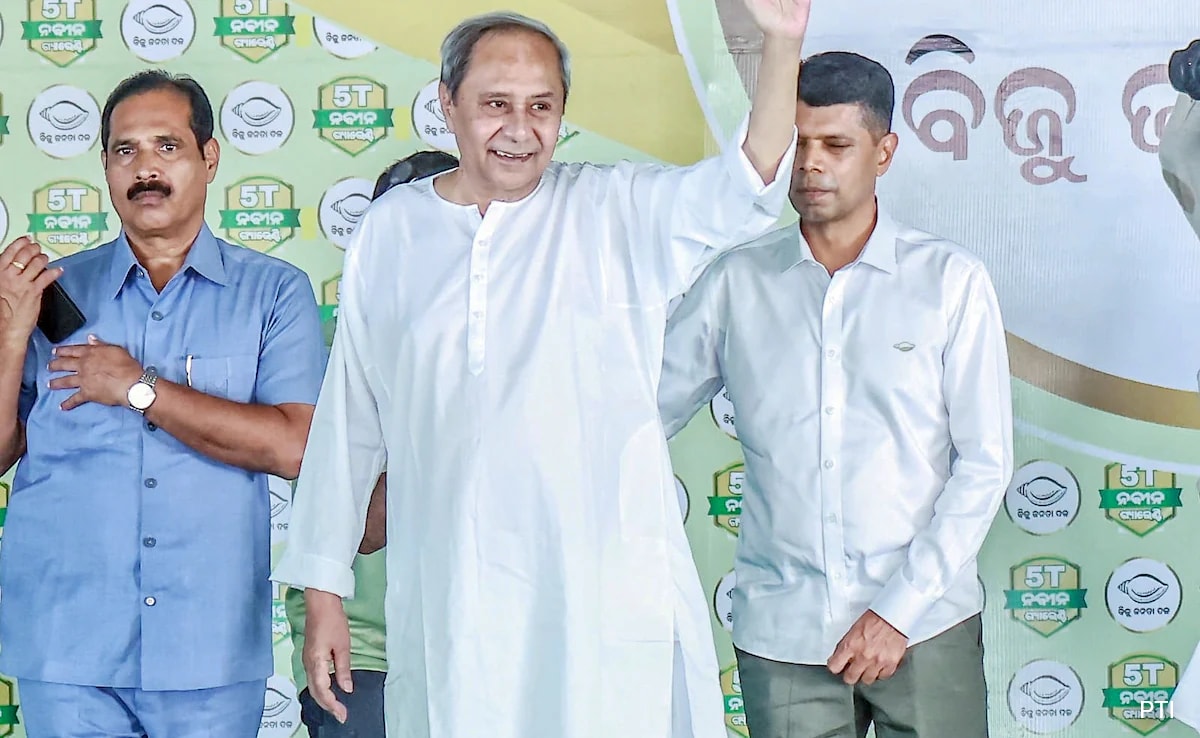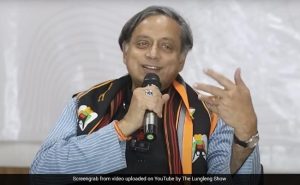2024-06-05 08:30:24

This seismic shift has left many wondering – what caused this political titan to tumble?
Bhubaneswar:
Although born in Odisha’s Cuttack, Naveen Patnaik lived most of his life in a sprawling family estate in Lutyens’ Delhi. The premium estate, located between Prithviraj Road and Aurangzeb Road, was bought by his father Biju Patnaik from the Maharaja of Jubbal, and once hosted global icons like Mick Jagger, Robert De Nero, Jackie Kennedy and Bruce Chatwin. Long before Mr Patnaik emerged as a political stalwart, this house was a sanctuary for the elite and the artistic of Delhi’s socialite scene.
After his father’s death in 1997, Naveen Patnaik relinquished the haute monde of the nation’s capital, returned to Odisha and ruled as its chief minister for over 24 years.
Fast forward to 2024, and an unprecedented jolt for Naveen Babu, once considered invincible. The BJP ended the Biju Janata Dal (BJD)’s reign by not only securing 78 of the state’s 147 assembly seats but also claiming 20 out of 21 Lok Sabha seats. With just 51 assembly seats and a complete wipeout in Lok Sabha polls, the BJD is reeling.
The shocking results mean Mr Patnaik fell 73 days short of eclipsing Pawan Chamling as the longest-serving chief minister in India.
This seismic shift has left many wondering – what caused this political titan to tumble?
The “Outsider Sentiment” And VK Pandian
One of the foremost reasons for the BJD’s downfall was the growing anti-outsider sentiment, particularly aimed at VK Pandian, Mr Patnaik’s trusted aide and private secretary. Mr Pandian, a former IAS officer, wielded immense influence within the BJD and the state’s administrative machinery, often seen as the de facto ruler. This perception of an “outsider” from Tamil Nadu running the government did not sit well with the Odia populace, who began to resent Mr Pandian’s dominance and his style of functioning. The BJP capitalised on this sentiment, portraying the BJD as being puppeteered by an unelected bureaucrat.
The Modi-Shah Factor And Odia Asmita
The BJP’s campaign was marked by an aggressive focus on Odia Asmita, or Odia self-identity. Prime Minister Narendra Modi and Home Minister Amit Shah spearheaded an exhaustive campaign, stressing Odisha’s pride and urging voters to reclaim their state from a regime they painted as distant and disconnected. PM Modi’s 10 rallies and roadshows, coupled with Mr Shah’s robust campaign trail, resonated deeply with voters, especially in regions where the BJD had historically been dominant.
Naveen Patnaik’s Diminished Visibility
Another critical factor was Mr Patnaik’s conspicuous absence from the campaign trail. Unlike previous elections, where his presence was ubiquitous, this time Mr Patnaik was less visible. In the rallies where he actually turned up, he was always accompanied by the omnipresent Mr Pandian, who either held a mic for the 77-year-old, or kept his hand steady, or shadowed Mr Patnaik as he waved to party workers. This void left the BJD’s campaign lacklustre and less compelling. In contrast, the BJP’s carpet-bombing saw, besides PM Modi and Mr Shah, leaders like Rajnath Singh, Nitin Gadkari, Himanta Biswa Sarma and Hema Malini adding star power that the BJD sorely lacked.
Tactical Missteps And Lack of Succession Planning
The BJD’s strategy of providing tacit support to the BJP at the national level backfired spectacularly. This cozy arrangement had initially helped the BJD but eventually blurred the lines between ally and opponent, eroding BJD’s distinct identity. Moreover, the BJD’s glaring lack of a succession plan became a critical Achilles’ heel. As Naveen Patnaik’s health became a focal point, the absence of a clear heir apparent created uncertainty and diminished confidence among the electorate. Rumours and speculation about Mr Patnaik’s health further fueled the BJP’s narrative, with PM Modi even hinting at possible conspiracies behind Mr Patnaik’s declining health.
Dharmendra Pradhan’s Western Odisha Campaign
The BJP’s strategic focus on Western Odisha, an area often perceived as neglected, played a significant role in their victory. Mr Pradhan, a Union Minister, camped in Sambalpur and vigorously campaigned with promises of upliftment and development for the region. His stature as a national leader provided voters a compelling alternative to Mr Patnaik, who clearly lacked an heir that would be accepted by everyone in the state.
Overconfidence And The “400 Paar” Parallel
The BJD’s claims throughout the campaigning period that Mr Patnaik would comfortably secure a sixth term mirrored the NDA’s “400 paar” claim, leading to a sense of complacency within the BJD. This overconfidence was starkly evident in their campaign strategy, which lacked the urgency and rigour seen in previous elections. Meanwhile, the BJP’s relentless and energised campaign capitalised on this, resulting in a decisive victory.
The Ratnabhandar Controversy
The Ratnabhandar issue, revolving around the missing key of Lord Jagannath’s treasury, was another significant blow to the BJD. The BJP adeptly exploited this controversy, pitching it as a symbol of the BJD’s mismanagement and lack of respect for Odia cultural heritage.
Naveen Patnaik,Lok Sabha Elections 2024,Odisha Elections,VK Pandian,Odisha assembly elections,elections 2024,BJD,pm modi,dharmendra pradhan,naveen patnaik loses,Odisha election results,lok sabha elections,election news
Source link
![]()



